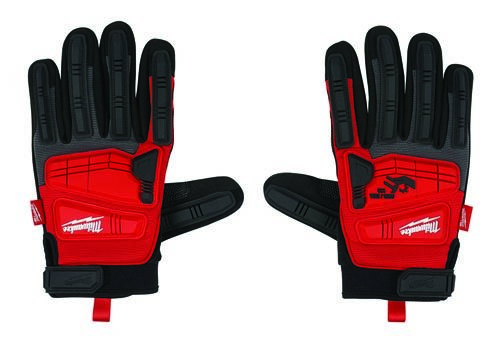Selecting appropriate hand protection
What do I need to know before buying gloves for a specific job task?

Responding is Zach Richman, senior product manager, Milwaukee Tool, Brookfield, WI.
Safety gloves are a staple on the jobsite. But as standards change and technology develops, it has become increasingly more difficult to determine what type of glove is needed for the application at hand. According to the most recent data available from the Bureau of Labor Statistics, hand injuries resulted in more than 121,800 lost work hours in 2017. When workers seek medical treatment for these types of injuries, the average cost is $22,384. Among these cases, 70% of the injuries occurred while the worker wasn’t wearing gloves.
Unfortunately, these severe injuries and overwhelming statistics highlighting the necessity of hand protection don’t clear up this confusion surrounding what needs to be considered when determining the proper hand protection solution. Understanding the differences between each type of hand protection is difficult – even for safety professionals. Multiple jobsite requirements need to be considered when protecting workers’ hands – with cut resistance, impact resistance or back-of-hand protection at the forefront. If a worker is protected properly, hand injuries are among the most preventable work-related injuries.
Industry standards
According to BLS, a single hand injury results in six days away from work, on average. This can translate to lost wages and diminished abilities when returning to work. Luckily, cut-resistant gloves are available to protect workers’ hands from cuts when working with sharp tools and materials. The American National Standards Institute categorizes cut resistance into nine levels of protection; the higher the cut level, the more protection the glove provides. Examples of the proper applications for each cut level are:
ANSI A1 (light cut hazards): Light material handling, general work, small parts assembly, forestry and construction
ANSI A2-A3 (light/medium cut hazards): Demolition, material handling, general work, small parts assembly, forestry, construction, wire stripping, pipe threading, cutting and automotive
ANSI A4: (medium cut hazards): Manufacturing; light glass handling; drywall; electrical; carpet installation; heating, ventilation and air conditioning; automotive assembly; and metal handling
ANSI A5 (medium/heavy cut hazards): Metal handling, abrasive/sharp material handling, pipe threading, cutting, drywall, electrical, glass handling, and duct work
ANSI A6-A9 (high cut hazards): Heavy metal handling, automotive assembly, sharp metal handling and recycling
Fallen building materials, dropped tools and tasks that involve the risk of pinching and crushing are no strangers to jobsites. Unfortunately, these common hazards are likely to put workers at risk for impact injuries. Until last year, no official requirements were in place regarding impact resistance. In March 2019, the International Safety Equipment Association set the ANSI/ISEA 138 impact standard, which provides new testing methods for impact-resistant gloves and back-of-hand protection, including a new scale testing impact rating for all finger and knuckle impact sites:
Level 1 (low impact): Allows an average force of impact less than or equal to 9 kilonewtons
Level 2 (medium impact): Allows an average force of impact less than or equal to 6.5 kN
Level 3 (high impact): Allows an average force of impact less than or equal to 4 kN
With these standards in place, manufacturers, safety managers and contractors have an excellent opportunity to equip their facilities with the proper hand protection, helping workers stay productive and minimizing hand injuries.
Editor's note: This article represents the independent views of the author and should not be construed as a National Safety Council endorsement.
Post a comment to this article
Safety+Health welcomes comments that promote respectful dialogue. Please stay on topic. Comments that contain personal attacks, profanity or abusive language – or those aggressively promoting products or services – will be removed. We reserve the right to determine which comments violate our comment policy. (Anonymous comments are welcome; merely skip the “name” field in the comment box. An email address is required but will not be included with your comment.)

